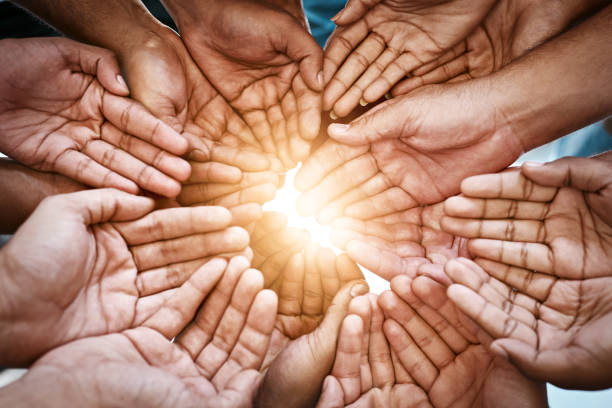Where to Donate Hair
Introduction to Hair Donation
Hair donation is a noble act that can significantly impact the lives of individuals suffering from hair loss due to medical conditions. Donating hair is a simple yet profound way to contribute to the well-being of others, especially children and adults battling cancer, alopecia, and other illnesses that lead to hair loss. By understanding the process and identifying the right organizations, you can make an informed decision about where and how to donate your hair.
Why Donate Hair?
Hair loss can be a traumatic experience, particularly for those undergoing medical treatments such as chemotherapy. Wigs made from natural hair provide a sense of normalcy and confidence, helping recipients cope with the emotional and psychological aspects of hair loss. Donated hair is used to create high-quality wigs that are often provided free of charge or at a reduced cost to those in need. Your contribution can restore not just hair, but also hope and self-esteem.
General Guidelines for Hair Donation
Before deciding where to donate your hair, it's important to understand the general guidelines followed by most organizations. Typically, hair should be clean, dry, and free of chemical treatments like dye or bleach. The minimum length for donation varies, but it generally ranges from 8 to 12 inches. Hair should be secured in a ponytail or braid before cutting to ensure it stays together during the donation process.
Leading Organizations for Hair Donation
Locks of Love
Locks of Love is a well-known nonprofit organization that provides hairpieces to financially disadvantaged children in the United States and Canada who suffer from long-term medical hair loss. The organization accepts hair donations of at least 10 inches in length. Locks of Love has specific guidelines regarding the condition of the hair and requires that it be bundled in a ponytail or braid.
Wigs for Kids
Wigs for Kids is dedicated to helping children who have lost their hair due to medical conditions. This organization provides custom-fitted wigs that are designed to look as natural as possible. Wigs for Kids accepts hair donations of at least 12 inches in length. The hair must be clean, dry, and free of chemical treatments. The organization also encourages monetary donations to help cover the cost of creating the wigs.
Pantene Beautiful Lengths
Pantene Beautiful Lengths, a program by the Pantene hair care brand, has partnered with the American Cancer Society to create wigs for women undergoing cancer treatment. This initiative requires hair donations to be at least 8 inches long. The hair must be free of dyes, bleaches, and chemical treatments. Pantene Beautiful Lengths focuses on providing free, high-quality wigs to women in need.
Children With Hair Loss
Children With Hair Loss provides hair replacements to children and young adults facing hair loss due to medical conditions or treatments. The organization accepts hair donations that are at least 8 inches long. Hair can be chemically treated or colored, but it must be in good condition. Children With Hair Loss aims to provide hairpieces free of charge to recipients, relying on the generosity of hair and monetary donations.
Preparing Your Hair for Donation
To ensure your hair donation meets the requirements of your chosen organization, follow these steps:
- Clean and Dry Your Hair: Wash and condition your hair thoroughly. Make sure it is completely dry before cutting.
- Secure Your Hair: Gather your hair into a ponytail or braid. Use multiple hair ties to keep it secure.
- Measure and Cut: Measure the length of your hair to ensure it meets the minimum requirement. Cut above the hair tie to keep the ponytail or braid intact.
- Package and Send: Place the hair in a plastic bag and then in a padded envelope. Include any required donation forms and send it to the organization’s specified address.
The Impact of Your Donation
Donating hair is more than just a physical act; it's a gesture of compassion and support. The wigs made from donated hair can provide recipients with a sense of identity and confidence. For children, especially, having a wig that looks and feels natural can make a significant difference in their social interactions and overall well-being. Adults undergoing cancer treatment or suffering from alopecia can also benefit immensely from the confidence boost that comes with wearing a natural hair wig.
Stories of Hope
Many recipients of donated hair have shared heartwarming stories about how their new wigs have positively impacted their lives. For example, children who were once hesitant to attend school or social events due to their appearance have found new confidence and joy. Adults have expressed gratitude for the sense of normalcy and beauty that a natural hair wig provides. These stories highlight the profound effect that hair donations can have on individuals facing difficult challenges.
Encouraging Others to Donate
Spreading the word about hair donation can amplify its impact. Encourage friends, family, and community members to consider donating their hair. Social media platforms can be powerful tools for raising awareness and inspiring others to take action. Sharing personal experiences and stories of recipients can help others understand the importance of hair donation and motivate them to participate.
Frequently Asked Questions
How long does my hair need to be to donate?
The required length for hair donations varies by organization, typically ranging from 8 to 12 inches. It's important to check the specific requirements of the organization you choose to ensure your donation meets their criteria.
Can I donate colored or chemically treated hair?
Some organizations accept colored or chemically treated hair, while others do not. It's essential to review the guidelines of the organization you plan to donate to. For example, Children With Hair Loss accepts chemically treated hair, but Pantene Beautiful Lengths does not.
How should I package my hair for donation?
After securing your hair in a ponytail or braid, place it in a plastic bag and then in a padded envelope. Include any required donation forms and send it to the organization's specified address. Proper packaging ensures that the hair remains in good condition during transit.
Can I donate hair that has been cut for a while?
Most organizations prefer freshly cut hair. However, some may accept hair that has been cut and stored properly. It's best to check with the organization for their specific guidelines on hair age and storage.
Conclusion
Donating hair is a selfless act that can bring immense joy and confidence to individuals suffering from hair loss due to medical conditions. By choosing a reputable organization and following their guidelines, you can ensure that your donation makes a significant impact. The stories of hope and transformation from recipients highlight the profound effect that a simple act of kindness can have. Whether you're donating hair for the first time or are a seasoned donor, your contribution is invaluable and appreciated.
Hair donation is a powerful way to give back to the community and support those in need. By understanding the process and selecting the right organization, you can make a meaningful difference in someone's life. Your donation can help create beautiful, natural-looking wigs that restore confidence and joy to individuals facing the challenges of hair loss.




